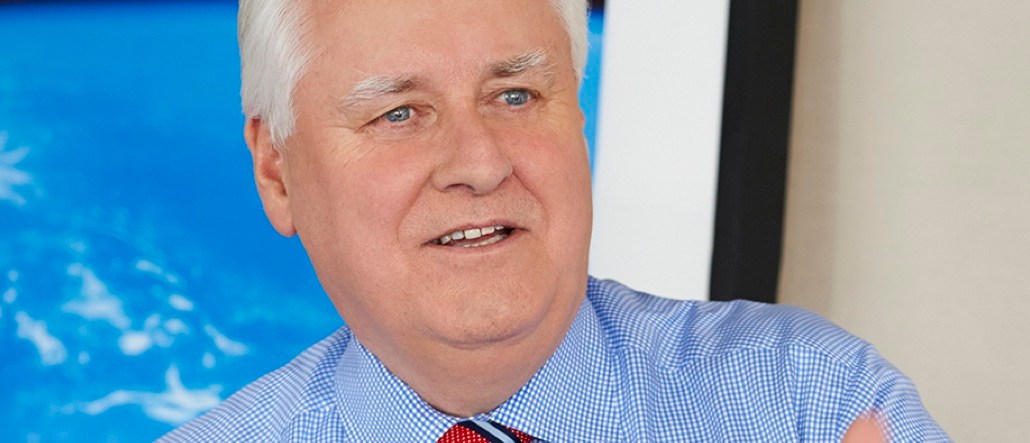Save 50% on a 3-month Digiday+ membership. Ends Dec 5.

The man tasked with bringing Time Inc. into the 21st century is moving on. On Tuesday, the media world woke up to reports that Joe Ripp, the company’s chairman and CEO, was stepping down. Ripp will be replaced by Rich Battista, a fast-rising executive who had served as president of Time titles People and Entertainment Weekly.
Explanations for the departure differ. Ripp himself cited a “health incident” while speaking to CNN’s Brian Stelter, while a Bloomberg report links his departure with Jana Capital purchasing a sizable chunk of Time Inc. stock, then expressing skepticism with the average age of Time Inc.’s execs.
It would be overly simplistic to say Ripp revolutionized Time Inc. The company’s stock price has declined by a third since its spin-off from Time Warner, and it has lagged behind rivals like Hearst in shifting its focus to digital. But the fact is Time Inc. was playing catch up when Time Warner spun it off in 2014, and today, a lot of that ground has been made up. “Time Inc. has a chance to be relevant in the next digital age because of Joe Ripp,” said Simulmedia founder Dave Morgan.
Here are four modernization initiatives Time Inc took under him:
Embraced native advertising
With print ad revenues locked into a secular decline, Ripp made no bones about the fact that he was going to do more for Time’s advertising partners, both in print and online. Under Ripp, ads started appearing on Time’s covers, and advertising and sponsored content sales — once done title by title — were executed across Time Inc.’s portfolio. Time Inc. also opened The Foundry, a massive creative and content studio in Brooklyn, where editorial and sponsored content, particularly video, are now forged under the same roof.
Simply blurring the line between church and state at a place like Time Inc took a tremendous amount of work, and some think few people besides Ripp could have pulled it off. “I think the only change agent they were able to embrace was one of their own,” said John McCarus, the former chief strategy officer of Federated Media and current consultant to several digital content companies. “Joe was an insider at an organization that had had a lot of trouble evolving.”
Modernized infrastructure
Time Inc. and its titles have a long history of trying to own their distribution; back in the 1950s, it bought a forest so Time could pulp its own paper. The rise of the internet took that control away from most publishers, but under Ripp, Time Inc. did a lot to forge robust distribution channels for its content, particularly mobile and video.”Time Inc. underinvested in technology over the years,” Ripp told our own Lucia Moses.
Ad position: web_incontent_pos1
Ripp wanted to overhaul that, and it led to changes big and small, from a new CMS that allowed editors to use content from different titles, to Time Inc. building its own private marketplace for programmatic advertising. A number of ad-tech purchases, including Myspace parent Viant, put Time Inc in position to offer advertisers all the targeting and automation capabilities that advertisers now expect. “It was gutsy to move away from a print-based, ad-driven model into a digital, scale-driven model,” said Peter A. Kreisky, a longtime publishing consultant who worked as an advisor to Jack Griffin when Griffin led Time Inc. “Taking the risk that Time Inc brands would add value and margin to the prices that Time Inc could command in programmatic.
“Buying Viant is a big change to the business model.”
Expanded events
Thanks to moneymakers like the Fortune Global Forum and Essence Fest, Ripp had long understood that events could be crucial for a publisher. But until Ripp, who at one point called events key to his strategy, events mostly filled out the margins of Time Inc.’s balance sheet. In addition to expanding Essence, Time Inc. launched festivals around the Sports Illustrated swimsuit issue, Entertainment Weekly began throwing red carpet dinners, and several other titles threw shindigs of their own.
Today, events, along with branded book publishing and licensing, now generates nearly as much income as digital advertising; all lumped together, Time Inc’s earned $199 million in other revenues through the first half of this year.
Embraced niches
In many ways, Time Inc. trades on the cachet of its oldest, best-respected brands. But under Ripp, the company made a serious effort to build newer ones, most of them aimed at very specific segments of the millennial audience. Sometimes, like in the case of Hello Giggles or Fansided, it did this by buying existing editorial properties; in other cases, like with Motto, or the Snug, it built them on its own, leaning on the best practices established by other digital publishers.
Ad position: web_incontent_pos2
How much Time Inc. will be able to build on any of these moves is unclear. But Battista and his colleagues have a foundation to build on now. “Jeff Bewkes made a very wise choice in bringing Joe in,” Kreisky said. “He was the right guy at the right time.”
More in Media

Digiday+ Research Subscription Index 2025: Subscription strategies from Bloomberg, The New York Times, Vox and others
Digiday’s third annual Subscription Index examines and measures publishers’ subscription strategies to identify common approaches and key tactics among Bloomberg, The New York Times, Vox and others.

From lawsuits to lobbying: How publishers are fighting AI
We may be closing out 2025, but publishers aren’t retreating from the battle of AI search — some are escalating it, and they expect the fight to stretch deep into 2026.

Media Briefing: Publishers turn to vertical video to compete with creators and grow ad revenue in 2026
Publishers add vertical video feeds to their sites to boost engagement, attract video ad spend and compete with news creators.
Ad position: web_bfu


